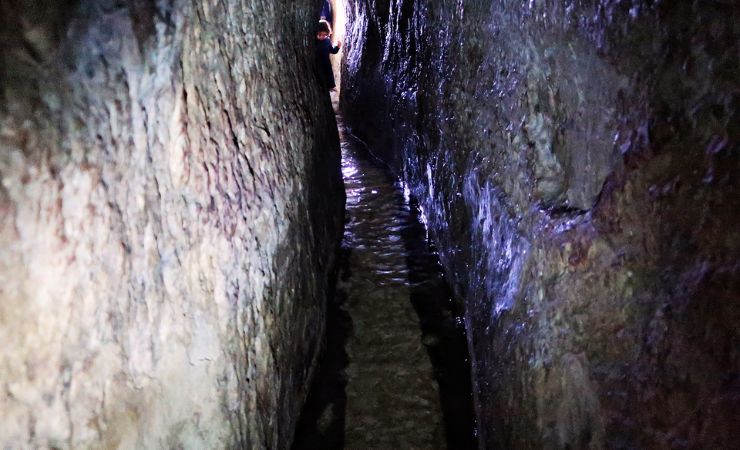Hezekiah's Tunnel: A Marvel of Engineering Amidst Siege
Hezekiah’s Tunnel is an underground aqueduct from the 8th Century BCE. It is a marvel of engineering that is carved meticulously through solid rock. It is from a time when the city braced itself against impending Assyrian aggression.

Location
Situated in the City of David, King Hezekiah’s Tunnel tunnel stretches from the Gihon Spring to the Pool of Siloam in the ancient city of Jerusalem.
Biblical context
King Hezekiah’s Tunnel holds a special place in biblical narratives. King Hezekiah of Judah, foreseeing the impending Assyrian siege, commissioned the tunnel as a strategic move to secure water for Jerusalem while simultaneously cutting off the water supply outside the city walls. This endeavor is chronicled in the following verses:



Historical Background to Hezekiah's Tunnel
Historical Backdrop
In 701 BC, as the Assyrian army approached, King Hezekiah of Judah, the 14th king, sought to fortify Jerusalem’s defenses. A significant part of this strategy was to secure the city’s water supply. Hezekiah ordered the construction of this tunnel to act as an aqueduct. The primary objectives were to ensure a continuous water supply for the city’s inhabitants and to prevent the invading troops from accessing the crucial Gihon spring. This strategic move was not just about survival but also about depriving the enemy of a vital resource.
Technical Aspects of the Tunnel
Stretching approximately 533 meters (1,750 feet), Hezekiah’s Tunnel is a marvel of ancient engineering. Scholars argue as the time it took to build the tunnel. This is anywhere from nine months to four years.
The tunnel was carved out by two teams starting from opposite ends, eventually meeting in the middle. The path of the tunnel, which zigzags and winds in places, suggests that the engineers might have been directed from above ground, possibly using sound signals to determine their position. This method, while ingenious, was not foolproof, as evidenced by the tunnel’s imperfect trajectory. Despite its length, the tunnel has a small 30 centimeter (12 inches) between the origin and exit. This means that its gradient is tiny and is only of 0.06 degrees.
Visiting Hezekiah’s Tunnel Today
The tunnel can be traversed even today. However the water can reach hip height in places, and the path is winding and narrow. It’s an experience that offers a tangible connection to history, but those with claustrophobia might want to reconsider.
The Siloam Inscription
In 1880, a significant discovery was made within the tunnel. A young boy stumbled upon an inscription, now known as the Siloam Inscription. This inscription narrates the moment when the two teams of diggers met in the middle. Written in Old Hebrew, it provides a first-hand account of the tunnel’s construction. However, the exact methods employed by the Israelite engineers remain a subject of speculation. Some believe that they might have used sound signals, tapping on the solid rock to guide the teams towards each other. The inscription does not directly name King Hezekiah or the Assyrian King Sennacherib, but its context aligns with the biblical accounts. After its discovery, the inscription was relocated and is currently housed in the Istanbul Archaeological Museum. In 2023, it was announce that the Siloam Inscription will return to Jerusalem.
Sources and Additional Reading
Amstrong Institute
Chabad – The Incredible Tunnel of King Hezekiah
Nearby Sites
Pool of Siloam: An ancient reservoir in Jerusalem that is linked to biblical rituals and miracles. The entire pool is being uncovered in 2023.
City of David: The birthplace of Jerusalem, this ancient city predates even the Old City walls. It is rich in archaeological finds from the Israelite history.
- Jerusalem Archaeological Park: A treasure trove showcasing Jerusalem’s millennia-old history. Offers a close glimpse into the wall and structures of the Second Temple.
Western Wall: The holiest site in Judaism, a remnant of the ancient Second Temple. Pilgrims from around the world visit to pray and place notes between its ancient stones.
Dung Gate: A significant entrance gate to the Old City‘s Jewish Quarter. Historically named for its proximity to waste disposal.



